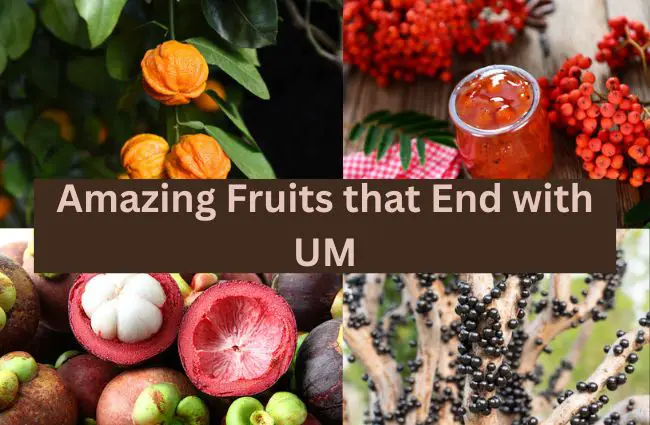Helpful Guides on each Category
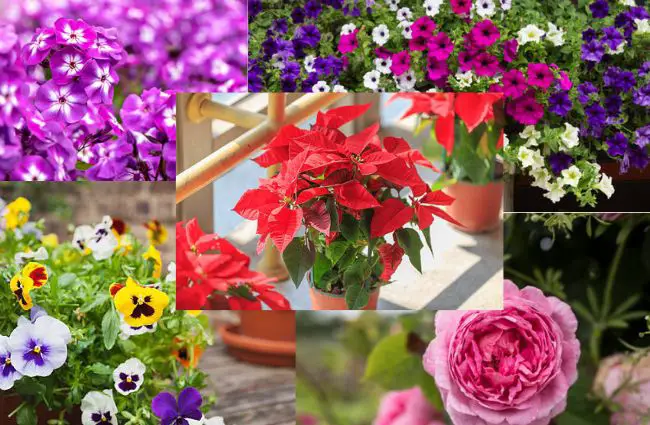
Today we are listing and briefly touching on beautiful plants that start with P which we can add to our garden, little space, office or patio!
From the flamboyant passionflower to the vibrant poppies, the letter P unlocks a treasure trove of unique and captivating greenery. There’s a P-tastic plant out there waiting to add a pop of personality to your space.
Let’s see this quick list of 25 plants that start with the letter p before briefly discussing each;
- Pansy
- Peony
- Petunia
- Phlox
- Poinsettia
- Poppy
- Primrose
- Protea
- Pampas Grass
- Palm Tree
- Papaya Tree
- Passionflower
- Pear Tree
- Peppermint
- Periwinkle
- Persimmon Tree
- Phalaenopsis Orchid
- Pine Tree
- Pink Jasmine
- Pitcher Plant
- Plum Tree
- Pomegranate Tree
- Pond Lily
- Portulaca
- Potato Vine
- Princess Flower
- Prunus Tree
- Purple Coneflower
- Purple Heart Plant
- Purslane
- Pyracantha
- Pyrethrum
- Pyrus Tree (Pear)
Read Also : Philodendron rugosum: How to Grow and Care for Best Results.
List of Unusually Beautiful Plants that Start with P
1. Pansy
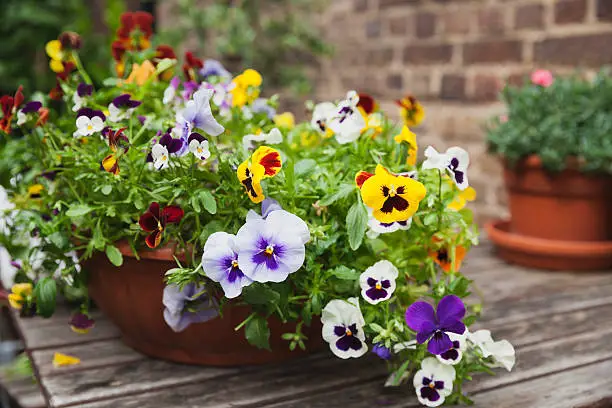
Pansies are colourful flowering plants belonging to the Viola genus. They have unique “face” markings on their petals and come in various vibrant colours. Pansies are compact, reaching a height of 6 to 9 inches and spreading up to 9 to 12 inches wide.
They prefer cool weather, well-draining soil, and 4 to 6 hours of sunlight per day. Pansies are low-maintenance and can be used in gardens, containers, and hanging baskets. They are also edible and add a mild, sweet flavour to salads and desserts. Overall, pansies are delightful and versatile plants.
2. Peony
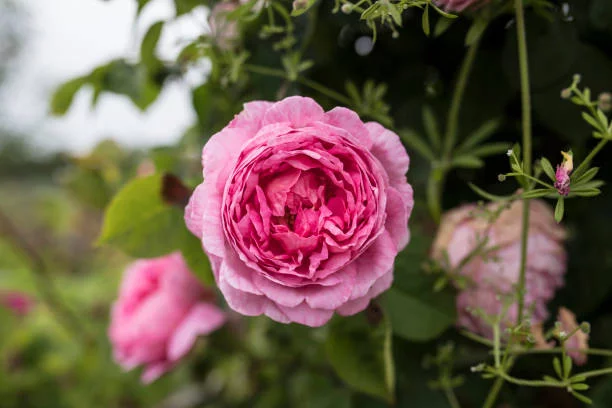
These plants are known for their lush, voluminous blooms and have shades of pink, red, white, and even yellow. The flowers can be single, semi-double, double, or even bomb-shaped, with layers upon layers of petals that create a luxurious and opulent appearance.
Peonies are herbaceous perennials that typically grow to a height of 2 to 4 feet (60 to 120 centimetres), although some tree peony varieties can reach up to 6 feet (180 centimetres) in height. They have attractive, deeply lobed, glossy green leaves that provide an elegant backdrop to the striking blooms.
These plants prefer a sunny or partially shaded location in the garden with well-draining, fertile soil. Peonies have a long lifespan and can thrive for decades if given proper care. See this guide to grow some peony flowers.
Also Read Tillandsia Ionantha (Sky Plant): How to Care for and Grow this Bromeliad Plant.
3. Petunia
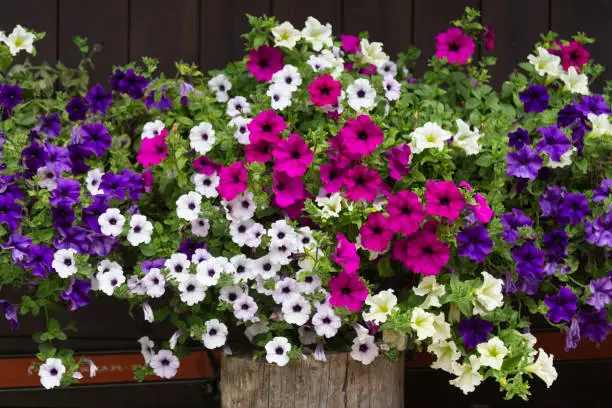
Petunias are vibrant and popular annual flowering plants that start with P. They come in a wide variety of colours, including shades of pink, purple, red, white, and yellow. They can have single or double blooms, with some varieties showcasing intricate patterns and veining on the petals. Petunias also offer a pleasant fragrance, adding to their overall appeal.
Petunias are relatively compact, typically growing to a height of 6 to 18 inches (15 to 45 cm) and spreading up to 12 to 36 inches (30 to 90 centimetres) wide. They have soft, slightly sticky leaves and produce trumpet-shaped flowers that bloom profusely throughout the growing season.
Petunias are known for their versatility and adaptability. They can be used as bedding plants, border edging, or cascading plants in hanging baskets and containers. With their profusion of blooms and vibrant colors, petunias create an eye-catching display in any outdoor space.
Learn how to successfully grow pensutias here.
4. Phlox
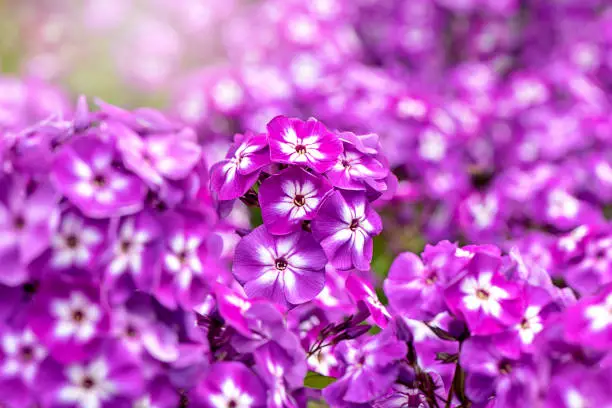
Phlox is a lovely flowering plants that start with P. It belongs to the Polemoniaceae family and is native to North America. Phlox is highly valued for its abundant clusters of fragrant flowers and is a popular choice for adding colour and beauty to gardens.
There are several species of phlox, including annual and perennial varieties. They come in a range of colours, such as white, pink, lavender, purple, and red. The flowers are typically small and star-shaped, forming dense clusters atop sturdy stems.
Phlox plants attract pollinators like butterflies and hummingbirds, making them a welcome addition to wildlife-friendly gardens. They bloom in spring or summer, depending on the species, and some varieties may have a second flush of blooms in the fall.
5. Poinsettia
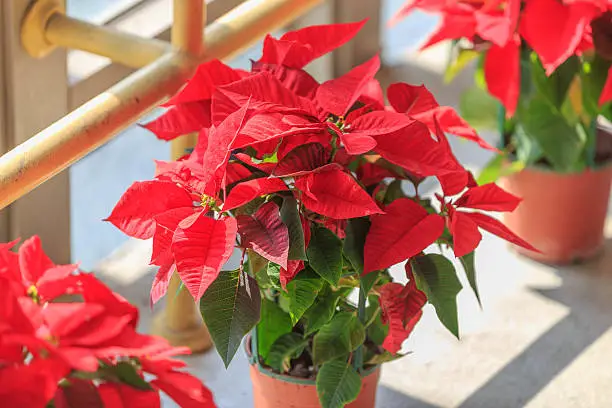
Poinsettias are shrubs, but they are mostly grown as potted plants. The colourful part of the plant that is often mistaken for flowers is specialized leaves called bracts. The true flowers of the poinsettia are small and yellow and are located in the centre of the bracts.
These plants require bright, indirect light and thrive in temperatures between 60 to 70°F (15 to 21°C). They are sensitive to cold drafts and extreme temperatures, so it’s important to place them where they can be protected from sudden temperature changes.
For You: What is Ginger Shampoo Plant Good For?
6. Poppy
Poppies are captivating flowering plants that start with P known for their delicate and vibrant petals, which come in a range of colours including red, orange, pink, white, and purple. They have a distinct, cup-shaped flower form with a prominent centre of stamens.
One notable species of poppy is the opium poppy (Papaver somniferum), which is known for its medicinal properties. It is cultivated for the production of opium, which contains various alkaloids used in the pharmaceutical industry. However, it’s important to note that the cultivation and use of opium poppies for recreational purposes are illegal in many countries.
In addition to their beauty, poppies hold symbolic meanings in different cultures. The red poppy, for example, has become a symbol of remembrance for soldiers who have lost their lives in war, particularly in World War I.
7. Primrose
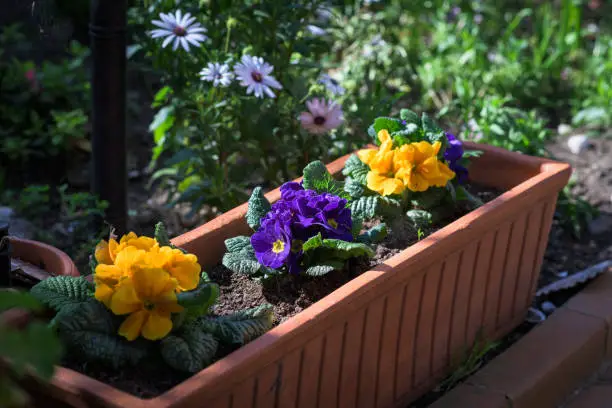
These plants typically have rosettes of basal leaves and produce clusters of flowers on sturdy stems. Primroses come in a range of colours, including shades of pink, purple, yellow, white, and red. Some varieties even display multiple colors on a single flower.
Primroses are generally cool-season plants, with many species blooming in early spring. They prefer partial shade to full shade, depending on the specific variety, and thrive in moist, well-draining soil. Regular watering is important to keep the soil consistently moist, but be careful not to overwater, as excess moisture can lead to root rot.
These plants are suitable for various garden settings, including borders, rock gardens, woodland gardens, or containers. They also make lovely indoor plants if provided with adequate light and cooler temperatures.
8. Protea
The flowers of protea plants are often large and showy, with a central cone-shaped structure surrounded by colourful bracts. The bracts can be vibrant shades of pink, red, orange, yellow, or white, and they create a visually stunning display. The flowers are long-lasting, making them popular in floral arrangements and cut flower bouquets.
Proteas are typically evergreen shrubs or small trees. They have leathery, lance-shaped leaves that add to their overall aesthetic appeal. Some species also feature interesting foliage, such as silver or hairy leaves, which add texture and visual interest to the plant.
Proteas have a unique ecological relationship with pollinating birds, such as sunbirds and sugarbirds, which are attracted to their nectar-rich flowers. This makes proteas an excellent choice for bird-friendly gardens and wildlife habitats.
Also check: Blue Hosta Plants Care Guide: Planting and Growth.
9. Pampas Grass
Pampas grass is known for its tall and elegant plume-like flower heads that can reach impressive heights. The flower heads are typically creamy white or pinkish and add a dramatic and airy element to landscape designs. The long, feathery plumes sway gracefully in the wind, creating a captivating visual effect.
This grass is perennial and forms large clumps of long, narrow leaves that can grow up to 10 feet (3 meters) tall. The leaves have sharp edges, so it’s important to handle them with care. Pampas grass is a fast-growing plant that can spread quite vigorously, so it’s important to provide ample space to grow and prevent it from crowding out other plants.
While pampas grass can be a stunning addition to landscapes, it’s important to be cautious when planting it in certain regions. In some areas, it is considered an invasive species and can outcompete native plants. It’s best to check with local authorities or gardening experts to ensure that planting pampas grass is appropriate for your specific location.
10. Palm Tree
Palm trees have a variety of other practical and ornamental uses. The leaves of some palm species are used in the production of thatch for roofing or weaving into various crafts.
The trunks of certain palms are harvested for timber or are carved into decorative items. Additionally, palm trees are widely planted for their aesthetic appeal in landscaping, creating a tropical ambience in gardens, resorts, and public spaces.
Caring for palm trees involves providing them with appropriate conditions and regular maintenance. They require well-draining soil and should be watered adequately, especially during dry periods.
Some palm species benefit from occasional fertilization to promote healthy growth. Pruning is necessary to remove dead or damaged fronds and to maintain the tree’s appearance.
11. Papaya Tree
The papaya trees, also known as Carica papaya are fruit-bearing plants that start with P.
The fruit of the papaya tree is one of its main attractions. Papayas are large, elongated fruits with smooth, thin skin that can range in colour from green to yellow or orange when ripe, depending on the variety. The flesh is sweet and juicy, with a vibrant orange or pink cocolourInside the fruit, numerous black seeds are typically scooped out before eating.
Papayas are highly nutritious and are a good source of vitamins A, C, and E, as well as folate, potassium, and dietary fiber. They are known for their digestive enzyme, papain, which aids in the breakdown of proteins. Papayas are enjoyed fresh and are often used in salads, smoothies, desserts, and various culinary preparations.
Read On: 11+ Unusual Heart of Jesus Plant Benefits.
12. Passionflower
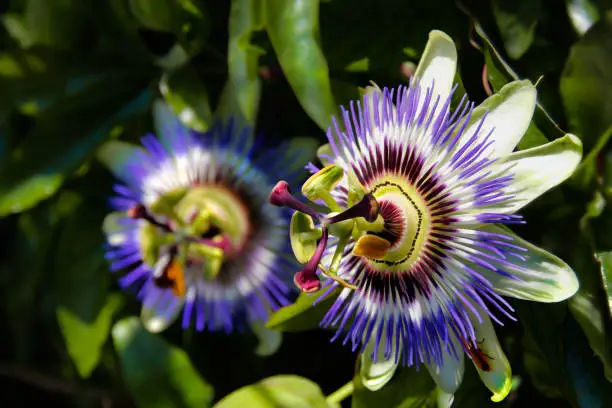
Passionflower, also known as Passiflora, are flowering plants that start with P. It belongs to the Passifloraceae family.
Passionflowers are known for their unique and intricate flowers, which come in a variety of colours and shapes. The flowers typically have a complex structure with a central disk surrounded by a series of colourful and elongated filaments. This arrangement gives the flowers a striking appearance and resembles a radiant, otherworldly beauty.
Apart from their aesthetic appeal, passionflowers are also valued for their symbolic and cultural significance. The name “passionflower” comes from the Christian interpretation of the flower’s various parts representing elements of the crucifixion story.
In addition to their ornamental and medicinal uses, passionfruit is highly prized for its sweet-tart flavour and is used in various culinary applications, including desserts, beverages, and sauces.
13. Pear Tree
Pear trees are deciduous and vary in size, depending on the variety. They typically have a rounded crown and dark green, glossy leaves that turn vibrant cocoloursn the fall. The tree produces clusters of small, white to pinkish flowers in the spring, which are pollinated by insects.
The fruit of the pear tree, known as pears, is the main attraction. Pears come in various shapes, sizes, and colours depending on the variety. They are round, oval, or pear-shaped, and their skin can range from green to yellow, red, or brown. The flesh of pears is juicy and sweet, with a smooth texture. Pears are commonly eaten fresh but can also be used in cooking, baking, preserves, and beverages.
Pear trees also require cross-pollination. Some pear varieties are self-pollinating, meaning they can produce fruit without the need for another tree.
Pears generally ripen after being harvested and require proper storage to maintain their freshness. They are typically picked when mature but still firm and allowed to ripen indoors at room temperature.
14. Peppermint
Peppermint is a popular aromatic herb that starts with the letter “P.” Its scientific name is Mentha × piperita, and it is a hybrid plant that is believed to be a cross between watermint (Mentha aquatica) and spearmint (Mentha spicata). Peppermint is well-known for its refreshing scent, cooling flavour, and various uses in culinary, medicinal, and cosmetic applications.
Peppermint plants have square stems and oblong, serrated leaves that are dark green. The leaves contain high levels of essential oils, which give peppermint its distinctive aroma and flavour. The plant produces small, purple flowers in summer, which are attractive to bees and other pollinators.
Its leaves are commonly used as a flavouring agent in teas, desserts, candies, and beverages, adding a refreshing and minty taste. Peppermint is also used in the production of peppermint oil, which is widely used as a flavouring and scenting ingredient in various products.
Medicinally, peppermint is known for its soothing and digestive properties. The tea is often consumed to ease indigestion, bloating, and stomach discomfort. The menthol component in peppermint provides a cooling sensation and can help relieve headaches and nasal congestion. Peppermint oil is also used topically for its analgesic and anti-inflammatory properties.
15. Periwinkle
There are two main species of periwinkle: Vinca minor, also known as common periwinkle or creeping myrtle, and Catharanthus roseus, commonly called Madagascar periwinkle.
Vinca minor, or common periwinkle, is a low-growing evergreen plant that is often used as ground cover. It has trailing stems that root where they touch the ground, allowing it to spread and form dense mats of foliage. The leaves are small, glossy, and dark green, while the flowers are typically blue or purple, although white and pink varieties also exist.
Catharanthus roseus, or Madagascar periwinkle, is a tropical perennial plant that is native to Madagascar. The flowers can be found in various colours, including shades of pink, white, and red. Madagascar periwinkle is often cultivated as an ornamental plant in gardens and landscapes, adding a splash of color to flowerbeds and borders.
Both species of periwinkle have been used medicinally. Catharanthus roseus, in particular, contains alkaloids that have been used in the development of several important drugs, including vincristine and vinblastine, which are used in cancer chemotherapy.
16. Persimmon Tree
There are several species of persimmon trees, but two common ones are the Asian persimmon (Diospyros kaki) and the American persimmon (Diospyros virginiana). Both species produce delicious fruit, although they have some differences in taste, texture, and tree characteristics.
Asian persimmon trees are typically larger and have a more upright growth habit. The fruits are usually larger, round or acorn-shaped, and vary in color from yellow to orange to reddish-orange, depending on the variety. Asian persimmons are known for their crisp, sweet flesh when fully ripe. Some popular Asian persimmon varieties include Fuyu, Hachiya, and Jiro.
American persimmon trees are generally smaller and have a more spreading or shrubby growth habit. The fruits are smaller, usually round or oval, and turn from green to orange when ripe. American persimmons have a rich, sweet flavour, but they are known for becoming very soft and pulpy when fully ripe. They are often used in baked goods, jams, and desserts. Popular American persimmon varieties include Early Golden and Yates.
17. Phalaenopsis Orchid
Phalaenopsis orchids are epiphytic or lithophytic, meaning they naturally grow on trees or rocks in their native habitats. They have thick, fleshy leaves that are usually green but can have variations in colouration and patterns. The flowers of Phalaenopsis orchids are typically large and come in a wide array of colours, including white, pink, purple, and yellow. Some hybrids even exhibit unique patterns and colour combinations.
These orchids thrive in warm temperatures, typically between 65°F and 85°F (18°C and 29°C) during the day. They can tolerate slightly cooler temperatures at night.
Phalaenopsis orchids can bloom for several weeks to several months under suitable conditions. After the flowers fade, the spike can be trimmed, and the orchid will enter a resting phase before potentially producing new blooms on a new spike.
18. Pine Tree
There are many species of pine trees, each with its unique characteristics. Some common species include the Eastern white pine (Pinus strobus), Scots pine (Pinus sylvestris), and the ponderosa pine (Pinus ponderosa). Pine trees vary in size, shape, and needle color, ranging from short shrubby varieties to tall, majestic trees.
Pine trees are well adapted to various climates and can be found in both cold temperate regions and warmer Mediterranean environments. They are known for their hardiness and ability to tolerate harsh conditions like drought and poor soil quality.
The wood of pine trees is highly valued for its strength and versatility. It is commonly used in construction, furniture production, and the manufacturing of paper and other wood-based products. Pine resin, obtained from the tree’s bark, has been used traditionally for various purposes, including as a natural adhesive, waterproofing agent, and in the production of turpentine.
Pine trees are often cultivated for landscaping and ornamental purposes. Their attractive form and evergreen foliage make them popular choices for gardens and parks. Some species, such as the Norfolk Island pine (Araucaria heterophylla), are even grown as indoor houseplants.
19. Pink Jasmine
These are vigorous climbing plants that start with p that can reach heights of up to 20 feet (6 meters) or more. It features twining stems with dark green, compound leaves composed of several leaflets. The leaves provide an attractive backdrop for the profusion of small, star-shaped flowers that appear in clusters.
The flowers of Pink Jasmine are highly fragrant, emitting a sweet and intense scent that fills the air. Each flower has five petals and is usually pink, although white varieties also exist.
Pink Jasmine is often grown outdoors in warm climates but can also be cultivated indoors as a houseplant. When grown indoors, it appreciates good air circulation, and placing it near a sunny window can help provide sufficient light.
The fragrance and beauty of Pink Jasmine make it a popular choice for gardens, trellises, and arbours. Its climbing nature allows it to create a visually appealing display while filling the surroundings with its delightful scent.
20. Pitcher Plant
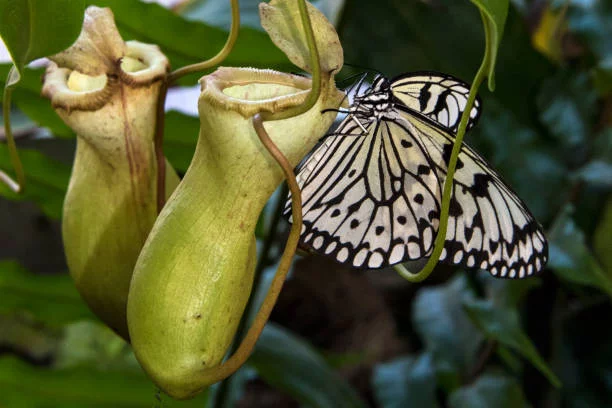
The pitcher plants are fascinating carnivorous plants that start with the letter “P.” It belongs to the family Nepenthaceae and is known for its unique pitcher-shaped leaves that trap and digest insects and other small prey.
The inside of the pitcher is lined with a slippery surface and contains digestive enzymes or fluid that helps break down the trapped prey.
Here are some notable examples of pitcher plants:
- Nepenthes
- Sarracenia
- Darlingtonia
21. Plum Tree
The plum tree is a deciduous fruit tree that starts with the letter “P.” It belongs to the genus Prunus and is known for producing delicious and juicy plums. Plum trees are cultivated in many parts of the world for their edible fruit, which comes in a variety of colours and flavours.
Plum trees are medium-sized trees that can reach heights of 15 to 20 feet (4.5 to 6 meters) on average, although some varieties can grow taller. They have a rounded or spreading canopy with branches covered in oval-shaped, serrated leaves. Plum trees bloom in spring, displaying clusters of fragrant, five-petaled flowers. The flowers can be white, pink, or light purple, and they attract bees and other pollinators.
Plums can be enjoyed fresh, used in various culinary preparations, or preserved by canning or drying. They are rich in vitamins, minerals, and dietary fibre, making them a nutritious and flavorful addition to the diet.
21. Pomegranate Tree
Pomegranate trees are relatively small, reaching an average height of 15 to 20 feet (4.5 to 6 meters). They have a dense, bushy growth habit with multiple branches covered in glossy, narrow leaves. The tree’s most striking feature is its eye-catching flowers, which are typically bright red or orange-red and have a trumpet-like shape. These flowers attract pollinators, such as bees and butterflies, and give way to the distinctive fruit.
Pomegranates are known for their high antioxidant content and are consumed fresh, used in cooking, or processed into juice, jams, or sauces.
Pomegranate trees can take a few years to establish and start bearing fruit. Once they begin producing, pomegranates can be stored for several weeks in a cool, dry place or consumed fresh for their juicy arils.
23. Pond Lily
The pond lilies, also known as the water lilies, are aquatic plants that start with the letter “P.” It belongs to the family Nymphaeaceae and is known for its stunningly beautiful flowers and floating leaves.
Pond lilies are perennial plants that grow in shallow water, with their roots anchored in the mud or sediment at the bottom. The leaves of pond lilies are round or oval-shaped, and they float on the water’s surface, creating a distinctive green carpet. The leaves have a waxy coating that repels water, keeping them dry and preventing them from sinking.
They provide shade and cover for fish, amphibians, and other aquatic organisms. The floating leaves also help to reduce water temperature and limit the growth of algae by blocking sunlight.
Pond lilies can be a stunning addition to a garden pond or water feature, providing beauty and a touch of serenity.
24. Portulaca

Commonly known as moss rose or purslane, these are flowering plants that start with P It belongs to the Portulacaceae family and is native to hot and arid regions, including North Africa, the Middle East, and South America.
Portulaca plants are low-growing, succulent annuals or perennials. They have fleshy, cylindrical leaves that are often arranged in clusters along the stems. The leaves can vary in colour from green to reddish-green and may have a waxy or glossy texture. Portulaca flowers are the main highlight of the plant. They are small, typically measuring around 1 inch (2.5 centimetres) in diameter, and come in a wide range of colours, including red, pink, orange, yellow, and white. The flowers usually have multiple petals and can be single or double in form.
It is also commonly seen in rock gardens, containers, and hanging baskets, where its trailing habit adds a cascading effect.
25. Princess Flower
Princess flower is a relatively large shrub that can reach a height of 6 to 10 feet (1.8 to 3 meters) with a similar spread. It has dense, evergreen foliage characterized by large, velvety, dark green leaves that are elliptical or ovate. The leaves provide an attractive backdrop to the striking flowers.
The flowers of the princess flower are the main highlight of the plant. They are large, typically measuring around 3 to 4 inches (7.6 to 10 centimetres) in diameter, and have a rich, vibrant colour. The most common color is deep purple, but cultivars of colour pink, lavender or white flowers are also available. The flowers have a distinctive shape, with five petals and a prominent, contrasting centre of stamens.
Princess flower can be propagated through stem cuttings. Take 4- to 6-inch (10- to 15-centimeter) cuttings from healthy, mature stems and remove the lower leaves. Plant the cuttings in well-draining soil or a rooting medium, keep them moist, and place them in a warm, bright location. They should root within a few weeks.
26. Prunus Tree
The Prunus tree is a type of tree that belongs to the Prunus genus, which includes a variety of flowering trees and fruit-bearing trees. The genus Prunus is part of the Rosaceae family and is known for its beautiful blossoms and delicious fruits. Some common types of Prunus trees include cherry trees, plum trees, peach trees, and apricot trees.
Prunus trees are widely distributed and cultivated in various parts of the world, depending on the species. They are valued for both their ornamental beauty and their fruit production.

